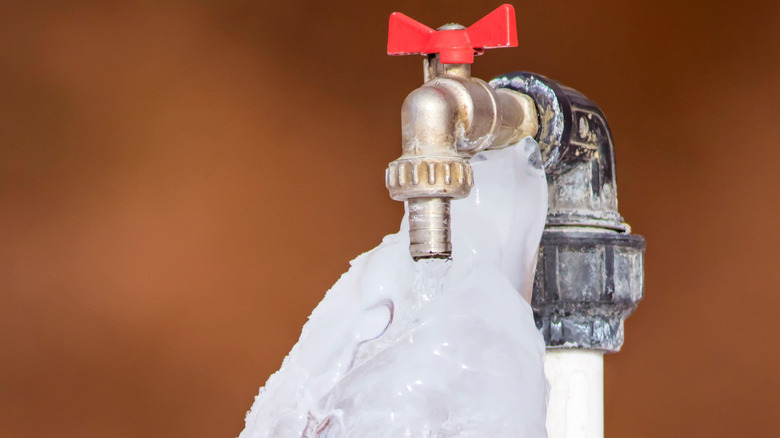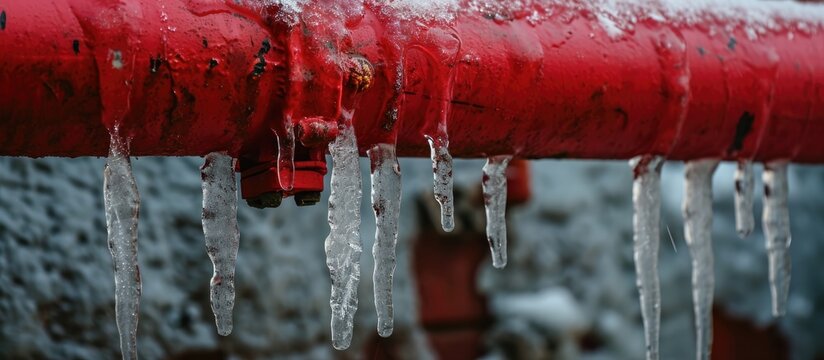Tips to Prevent Frozen Pipes in Winter: Pro Advice
Tips to Prevent Frozen Pipes in Winter: Pro Advice
Blog Article
The publisher is making several great points relating to Preventing and dealing with frozen pipes as a whole in this article following next.

Cold weather can ruin your plumbing, especially by freezing pipelines. Below's just how to avoid it from taking place and what to do if it does.
Introduction
As temperatures drop, the threat of frozen pipelines boosts, potentially leading to expensive fixings and water damages. Understanding just how to prevent frozen pipelines is crucial for home owners in chilly climates.
Comprehending Frozen Pipelines
What triggers pipes to ice up?
Pipelines freeze when revealed to temperatures listed below 32 ° F (0 ° C) for expanded periods. As water inside the pipes ices up, it expands, putting pressure on the pipeline wall surfaces and potentially triggering them to break.
Risks and problems
Frozen pipelines can bring about water system disturbances, home damages, and expensive repair services. Ruptured pipelines can flood homes and cause comprehensive architectural damages.
Signs of Frozen Pipeline
Identifying frozen pipes early can stop them from breaking.
Just how to recognize icy pipelines
Seek decreased water flow from faucets, uncommon odors or noises from pipes, and visible frost on revealed pipelines.
Avoidance Tips
Shielding at risk pipelines
Wrap pipes in insulation sleeves or make use of warmth tape to protect them from freezing temperature levels. Concentrate on pipes in unheated or exterior locations of the home.
Heating techniques
Keep indoor areas appropriately warmed, specifically areas with plumbing. Open up cabinet doors to allow cozy air to flow around pipes under sinks.
Safeguarding Outside Plumbing
Yard tubes and exterior faucets
Disconnect and drain yard pipes before winter. Mount frost-proof faucets or cover outdoor faucets with insulated caps.
What to Do If Your Pipes Freeze
Immediate actions to take
If you suspect frozen pipelines, keep faucets available to soothe pressure as the ice melts. Use a hairdryer or towels soaked in hot water to thaw pipelines slowly.
Long-Term Solutions
Structural changes
Take into consideration rerouting pipelines away from exterior wall surfaces or unheated locations. Add extra insulation to attic rooms, basements, and crawl spaces.
Updating insulation
Purchase premium insulation for pipelines, attics, and walls. Correct insulation assists maintain regular temperatures and decreases the threat of frozen pipes.
Conclusion
Protecting against frozen pipelines requires positive steps and fast actions. By comprehending the causes, indications, and preventive measures, house owners can safeguard their plumbing during cold weather.
5 Ways to Prevent Frozen Pipes
Drain Outdoor Faucets and Disconnect Hoses
First, close the shut-off valve that controls the flow of water in the pipe to your outdoor faucet. Then, head outside to disconnect and drain your hose and open the outdoor faucet to allow the water to completely drain out of the line. Turn off the faucet when done. Finally, head back to the shut-off valve and drain the remaining water inside the pipe into a bucket or container. Additionally, if you have a home irrigation system, you should consider hiring an expert to clear the system of water each year.
Insulate Pipes
One of the best and most cost-effective methods for preventing frozen water pipes is to wrap your pipes with insulation. This is especially important for areas in your home that aren’t exposed to heat, such as an attic. We suggest using foam sleeves, which can typically be found at your local hardware store.
Keep Heat Running at 65
Your pipes are located inside your walls, and the temperature there is much colder than the rest of the house. To prevent your pipes from freezing, The Insurance Information Institute suggests that you keep your home heated to at least 65 degrees, even when traveling. You may want to invest in smart devices that can keep an eye on the temperature in your home while you’re away.
Leave Water Dripping
Moving water — even a small trickle — can prevent ice from forming inside your pipes. When freezing temps are imminent, start a drip of water from all faucets that serve exposed pipes. Leaving a few faucets running will also help relieve pressure inside the pipes and help prevent a rupture if the water inside freezes.
Open Cupboard Doors
Warm your kitchen and bathroom pipes by opening cupboards and vanities. You should also leave your interior doors ajar to help warm air circulate evenly throughout your home.

Do you really like reading up on Helpful Tips to Prevent Frozen Pipes this Winter? Place a remark below. We will be happy to see your reactions about this post. In hopes to see you back again later on. Loved our review? Please share it. Help others check it out. Thanks so much for your time spent reading it.
Click Here Report this page